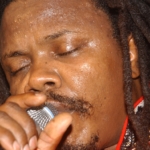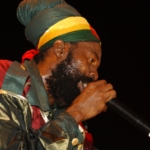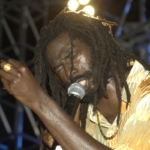
It is said that great things happen during great times, and great people become great during great times. This must have been true in Trench Town back in the 1960s. It was the beginning of Jamaica’s freedom from Colonial rule. Liberation was in the air as Jamaica was just catching its own political breath. And musical destiny waited its turn on the little known island.
In what is now one of the world’s most famous slums, the Trench Town neighborhood of Kingston, greatness was just over the horizon for a small group of artists. In the heady days of their new Jamaica, Trench Town must have seemed like a garden in full bloom with extraordinary talent. It was like a faucet pouring out raw folksy, bluesy, soulful music that eventual grew into a worldwide movement. Almost 50 years later, the Trench Town legacy is still changing music. Reggae’s story is one of greatness. It is a prime example of a historical occasion when a seemingly coincidental intersection of time, people and places becomes the vector for world-changing things, good and bad.
By all accounts, Kingston in the 1960s was an industrious combination of record producers, musicians and sound systems operators who turned out “hot wax records” by the dozens every week. Bellowing out new music over radio or on the hundreds of sound system Dancehall parties that took place all over the island. The music belonged to the people. It was a time of artistic experimentation that rode the wave of a tumultuous political and spiritual awakening. Jamaican yards were filled with the sounds of Mento, Ska and Rock Steady. And then along came reggae and The Wailers.
For many of Jamaica’s young people, music not only provided a creative form of expression, it was their best chance for moving out of poverty. From the ramshackle homes of Trench Town emerged the core members of The Wailers, along with the other creators of Reggae music. Soon they and the music they had created exploded around the world. Three young men — teenage boys, really – Bob Marley, Bunny Wailer (Neville Livingston) and Peter Tosh (Winston McIntosh) like many young Jamaicans turned to music. Early on, these three teens, who also went by the name The Teenagers, could be heard in daily “yard” jam sessions that are legendary. It was a time that bound the young men artistically and spiritually. Thank Jah these three rebellious teens never compromised their artistic integrity.
Like other great moments in time, a certain energy filled the air and a supporting cast showed up to push history forward. Other remarkably talented young people also lived in Trench Town including Jimmy Cliff, Rita Marley and Toots Hibbert of Toots & The Maytals.
Before becoming professionals, Bob, Bunny, and Peter had a mentor who guided their musical growth. Joe Higgs, from his home on Third Street, offered free music lessons. Higgs was a Rastafarian who used the sessions as a means to help motivate the youth by teaching them harmony techniques, breath control, music theory, and songwriting while instilling in them the Rastafarian way. It was Higgs who took one of the first steps in creating the evangelical music we now call Reggae. The Wailers literally slowed down Ska and Rock Steady music to create the iconic sounds of Reggae.
Of course, providence provided other great people to step in at exactly the right moment to help launch the Wailers and Reggae to become what is now Jamaica’s biggest export.
Among the musical legends that emerged from Kingston’s robust artistic well were producers and daring entrepreneurs. The first was Sir Coxsone Dodd and his Studio One label. Sir Coxsone worked closely with The Wailing Rudeboys, the Wailers’ their name at the time, slowing the Ska rhythm. Coxsone believed that his audience was getting older and wanted to slow down and The Wailers were happy to oblige for artistic reasons.
Bob, Bunny and Peter, along with Junior Braithwaite and back up singers Beverley Kelso and Cherry Smith changed names several times. From The Teenagers to The Wailing Rudeboys and then The Wailing Wailers. They eventually shortened the name to The Wailers and the rest, as they say, is history.
Working for years with Coxsone, The Wailers eventually felt that he was ripping them off. By some accounts, Coxsone was paying the band six pounds a week with no royalties. Thankfully, this misfortune presented a better opportunity for The Wailers. They switched to Lee “Scratch” Perry, a producer who went on to lead The Wailers to worldwide acclaim. Perry and The Wailers created the sounds of Reggae that became a revolution that lives today.
The Wailers’ name reflected the pain and anguish the boys felt deep within their souls while growing up in Trench Town. “The word ‘wail’ means to cry or to moan,” said Peter Tosh. “We were living in this so-called ghetto. No one to help the people, we felt we were the only ones who could express their feelings through music, and because of that, people loved it. So we did it.” A history that lives today started with the people.
For 50 years, Reggae has been the undisputed voice of peace, love, caring and hope. This confluence of music and art are at the heart of Jamaican culture. A stitch in time that continues its influence today, seeding other musical genres like Hip Hop and Reggaeton.
Thank you Trench Town, thank you Wailers for becoming that rare and mysterious vector of greatness.






